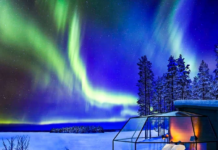A new ice era’s approaching it’s not such a nonsense matter, as meteorologists are observing a trend in open contrast to that marking previous decades. A belt in Earth’s atmosphere, – actually, the one placed between troposphere and stratosphere, – is nowadays warming rather than cooling, as it has constantly happened since the 1990s.
TAccording to atmospheric physicist Judah Cohen, this would lead the Arctic polar vortex to collapse on itself.
The vortex is like a huge, conic mass of cold air, which, when temperatures are low, is forming ice barriers that keep it stationary on the pole.
The fact that this air is heating up around the vortex leads us to imagine that a donut-shaped baric figure will form, and the vortex might collapse, causing all these masses of icy air to expand towards mid-latitudes.
Professor Cohen has published a projective map, according to that – for the month of December is not unlikely, and actually to be expected, that extreme frost will reach almost the forty-fifth parallel, instead of remaining confined to the Arctic.
What could be the consequences of this event?
It could be the signal of the beginning of a new Ice Age, as claimed by prof. Valentina Zakharova of Northumbia University.
One of the most interesting elements about this topic is that there seems to be a correlation with CO2. When the climate heats up, in fact, CO2 is released from the oceans, – which are among the largest deposits on the planet – while the figure collapses as the climate cools, because the lack of evaporation of water holds CO2 back, instead of releasing it. Is a condition, this, putting at great risk the human civilizations that thrives thanks to CO2, the “gas of life” that feeds the terrestrial flora.
According to this perspective, more, CO2 is not the cause but the effect of warming and cooling cycles on our planet. We could therefore exit a warming period and enter a cooling one instead, with all the consequences we can imagine.
When a climatic reversal of global temperatures occurs, the process can be very rapid: and, if professor Cohen is right, this could be the first year of reversal. We would not be surprised, then, if some parts of the northern hemisphere, namely above the 52nd parallel, soon would became no longer inhabitable.
Let’s hope this won’t happen. Otherwise we’ll need a lot of global warming.
PHOENIX











